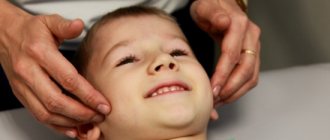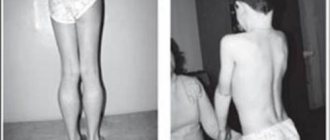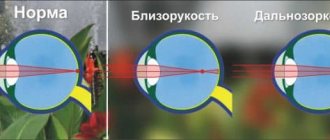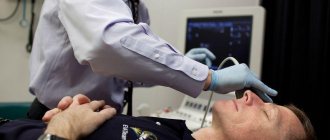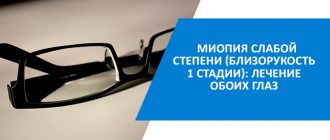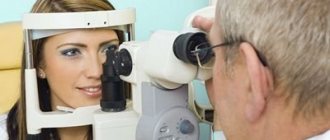STUTTERING
(
balbuties
) - a violation of the rhythm and smoothness of expressive speech with a predominant lesion of the communicative function. The speech of a person who stutters is accompanied by hesitations, stops (tonic spasms of the speech muscles), and repetitions of individual sounds, syllables, and words (clonic spasms). People who stutter also tend to introduce additional words into speech (embolophrasia), for example, “well”, “here”, “so”, movements accompanying speech (nodding, twitching, squinting, swaying), replacing “difficult” words with “easy” ones (so-called . tricks), the desire to avoid difficult speech situations. Many people who stutter have a fear of speaking in a formal setting, when prompt and accurate answers are required, and when speaking.
Etiology and pathogenesis
Among the etiol factors, the most important are genetic predisposition, the influence of various harmful factors on the fetus during pregnancy, somatic diseases and mental trauma in early childhood - during the period of the most intensive development of speech (“childhood disease” according to I. A. Sikorsky). More often 3. is observed in men.
Most researchers believe that 3. is based on patol, a reflex act that developed after mental trauma against a general neurotic background. Some researchers believe that 3. is a consequence of a violation of afferent synthesis due to a discrepancy in the time of bone and air conduction, instability of the functional asymmetry of the cerebral hemispheres, and impaired voice formation.
Clinical picture
The speech of people who stutter, especially in a situation of excitement or anticipation, occurs against a background of disturbances in the rhythm of breathing, rapid heartbeat, redness or pallor of the face, increased sweating, etc. The degree of severity of all these phenomena in some cases reflects the severity of the speech defect itself, in others it is in close dependence on the emotional state of patients in speech situations. There are two types of 3. - evolutionary and symptomatic, or secondary.
Evolutionary
3. occurs between 2 and 5 years during the period of speech formation. Depending on whether it arises on a neurotic basis or against the background of signs of organic brain damage, neurotic and neurosis-like 3 are distinguished. Along the course, evolutionary 3 can be progredient, regredient and recurrent.
Evolutionary 3. can have both an acute, psychogenic-reactive, and a gradual onset. Often the appearance of the first hesitations in speech is preceded by somatic weakness and some neurotic disorders (sleep disturbance, tearfulness, fearfulness, asthenia) of both somatic and reactive origin. In these cases, a sudden change in the situation, the appearance of sharp sounds, etc. is enough for the child to experience hesitation in speech. Stronger influences that cause a fear reaction can cause mutism (silence) and even the preceding loss of consciousness with subsequent convulsive manifestations in speech.
Neurotic
3., often referred to as “logoneurosis,” usually begins in a psychogenic-reactive type, following a fear reaction, in impressionable children prone to neurotic reactions. The dynamics of the wedge, the picture in these cases is expressed in an increase in both speech disorders (speech convulsions) and neurotic disorders (the appearance of obsessive fears, irritable weakness, fatigue, and in especially severe cases - nocturnal enuresis, sleepwalking). With age, 3. becomes more complicated by speech tricks, embolophrasia, accompanying movements and increasing timidity before speech. Typically, by the age of 11-13, a child becomes aware of a speech defect, develops a fear of speech, and has an active desire to avoid difficult speech situations. By the age of 15-16, both 3. and general neurotic disorders become most pronounced, which affects the general condition and social adaptation of patients. The influence of unfavorable factors and the lack of timely treatment, especially in the early stages of development 3., can contribute to the emergence of severe neurotic disorders with an increasing sense of inferiority and signs of neurotic depression, with a tendency to worsening speech convulsions, generalization of fear of speech, stabilization of vasovegetative disorders and the gradual formation patol, character traits (development of excessive sensitivity, hypochondriasis, irritable weakness).
Neurosis-like 3. often has a gradual onset and is often noted from the moment of formation of phrasal speech. These patients are characterized by polymorphism of both mental and speech disorders themselves - the presence, in addition to 3., tongue-tiedness, rapid speaking, insufficient voice modulation, etc. Moreover, in comparison with neurotic 3.; there is a tendency to greater speech convulsions and greater severity of hyperkinesis (see) and movements accompanying speech, as well as an easier occurrence of vasovegetative disorders. General motor development is also typically delayed. In general, patients in this group are characterized by later development of speech and the presence of signs of mental disorders already in childhood. Their behavior since childhood is characterized by either general motor and mental disinhibition, a tendency to dysphoria (see), or lethargy, passivity, and monotony in behavior. With age, features of stiffness in the manifestations of mental activity and viscosity in affective reactions appear. In the mildest cases, asthenic symptoms predominate (see Asthenic syndrome).
Despite the pronounced convulsiveness of speech, logophobia in these cases is of a reduced nature and fear of speech worries the patients little. Neurol, examination usually reveals signs of diffuse organic damage to c. n. With. and persistent phenomena of vasovegetative disorders. Social adaptation of adult patients in this group is determined by the severity of psychoorganic disorders.
Symptomatic, or secondary, 3. occurs in various types of speech pathology - dyslalia (see Tongue-tied), aphasia (see) and in various diseases - traumatic brain injury, epilepsy, encephalitis, reactive states in hysterical individuals, etc.
In patients suffering from any form of 3., electromyography (see) reveals chaotic contractions of the articulatory muscles and breathing disturbances during convulsive speech, and electroencephalography (see) reveals interhemispheric asymmetry and paroxysmal discharges. In case of neurosis-like 3., in addition, insufficiency of motor functions is noted.
Time doesn't cure stuttering
Home Articles Popular information articles Neurology
Speech is the youngest function in onto- and phylogenetic terms, therefore it is most susceptible to various both unfavorable and positive developmental influences. Unfavorable stressful situations and various diseases of the nervous system disrupt speech function the more quickly, the younger the patient, the more pronounced his somatic weakness, mental vulnerability, impressionability, etc. The most common speech damage manifests itself in children in the form of stuttering.
Stuttering is a violation of the rhythm, tempo and fluency of speech due to convulsive contraction of various muscle groups that form the sound design of speech (expressive speech). In 70 - 90 percent of patients it begins at 2 - 4 years of age, i.e. at the moment of speech formation. The incidence of these disorders in the population of the Russian Federation is from 1.5 to 2.5 percent; in boys it is 3–4 times more common than in girls. Its causes are often fear, overstrain of speech function as a result of a neurotic breakdown. In the medical history of these patients, there may be a hereditary predisposition (stuttering and a tendency to react neurotically to parental situations, tongue-tied speech, rapid speech excitedly); insufficiency of the nervous mechanisms involved in the regulation of speech activity due to organic lesions of the central nervous system (traumatic, etc.), mental illnesses, disorders characteristic of personality pathology (psychopathy). There is also a mechanism of imitative automatisms, when, during the development of speech, a child communicates with stuttering children or adults and automatically copies their speech. Again, a child with a predisposition to stutter will be more susceptible to copying.
In stuttering, some authors have identified four sequential phases. Phase 1 appears in the preschool period. Initially, the disorder occurs sporadically for several weeks or months between long periods of normal speech. After this period, a significant recovery rate is observed. During this phase, children stutter more often when they are excited or upset, when they have a lot to say, or in situations of communicative pressure. Phase 2 usually occurs in elementary school. The disorder is chronic, with very few, if any, periods of normal speech occurring. Such children are aware of their shortcomings. In this phase, stuttering concerns the main parts of speech - nouns, verbs, adjectives and adverbs. Phase 3 usually occurs after age 8 and lasts until adolescence. Most often, during this phase, stuttering occurs and intensifies in certain situations: calling to the board, talking with strangers, when shopping in a store, talking on the phone. Phase 4 usually occurs in late adolescence and adulthood. Characterized by a pronounced expectation of stuttering with fear, fear of words, sounds and situations. Substitution of words and verbosity are typical. People who stutter avoid situations that require speech and show other signs of fear and embarrassment. This type of stuttering is called logoneurosis, as it is initially neurotic in nature. Logoneurosis and stuttering are not synonymous, as you understand, they are sometimes different pathological processes. Stuttering may not be a logoneurosis, but logoneurosis is always manifested by stuttering and a neurotic coloring of speech and personality.
Logoneurosis (Greek logos - word, speech; Latin neurosis - neurosis) is a speech disorder in the form of stuttering. According to modern concepts (ICD-10, 1994), this refers to speech that is characterized by frequent repetition or prolongation of sounds or syllables or words; or frequent stops or hesitations in speech that interrupt its rhythmic flow. The severity of the disorder is such that it noticeably impairs the fluency of speech. Sometimes there are accompanying movements of the face and/or other parts of the body, which coincide in time with repetitions, prolongations or stops during speech. Last year in the city of Chelyabinsk, the share of such pathology as stuttering among children and adolescents was about 2 percent of all neurological pathology. This is not only a widespread speech disorder, but also a multi-cause disease with a complex symptom complex and, unfortunately, low treatment effectiveness, depending on the phase of the process. The entire period of a child’s speech development from 1 year to 6 years is considered sensitive, that is, particularly sensitive to both the perception of speech and the influence of various factors of the external and internal environment. Also, from 1.5 to 3 years, a child begins one of the critical periods of development of the nervous system, when nerve cells “remember” and learn everything that surrounds them. That is, the environment that you and I create for a child in a given period of time will be reflected in the future, and not only in speech and its disorders or talents, but also in character, reactions to others and himself. Given the special vulnerability of the developing functional connections in the nervous system during this period, super-strong irritation (according to Academician I.P. Pavlov) entails inhibition in the speech cortical zones, which causes a breakdown in motor automatism in speech, which is manifested by stuttering.
Failure of adaptation mechanisms that form speech and its impairment may depend on predisposing factors. What matters is the child’s specific age (from 1 to 6 years), the state of the nervous system (perinatal pathology of the nervous system, trauma, infectious diseases), individual characteristics of speech ontogenesis (late speech, impaired speech breathing, difficulty constructing phrases), features of the formation of brain asymmetry functions (a left-handed child is retrained to be right-handed or vice versa), the presence of mental trauma (acute and chronic stress), genetic factor.
For example, in men who stutter, sons in 12 percent of cases, and daughters in 9 percent of cases may have speech disorders, stuttering; in women who stutter, sons are prone to stuttering in 36 percent of cases, daughters in 17 percent of cases.
In 89 percent of cases, parents of children with stuttering exhibit disturbances in speech rate, intelligibility, oral praxis (complex motor skills of speech muscle movements), and hidden left-handedness.
In addition to hereditary predisposing factors, of course, it is necessary to take into account the living and upbringing conditions of the child in which he develops. Creating a favorable atmosphere for speech formation can prevail over heredity. In all cases, when logoneurosis manifests itself, the immediate cause that caused the pathology is important. Mental trauma is triggered only when the individual has a significant attitude towards it, and the target organ is involved in the pathological process, that is, when stuttering, the speech muscles, cortical speech centers, the limbic system of the brain (the so-called emotional cortex).
I will name some distinctive features of logoneurosis:
The neurotic form of stuttering - logoneurosis - is characterized by the appearance of stuttering at the age of 2 - 6 years, the presence of extensive phrasal speech before the onset of stuttering, the predominant psychogenic onset of speech pathology (a specific traumatic situation), a large dependence of the degree of stuttering on the emotional state of the stutterer and the conditions of speech communication, the possibility of smooth speech under certain conditions (singing, comfortable environment).
Stuttering associated with a violation of the development of speech rate and maturation of the nervous system due to damage to the latter (trauma, encephalopathy, infection, etc.) is characterized by its own differences. Previously, doctors called such stuttering neurosis-like, having structural damage to the nervous system, for example, in the perinatal period. This form of stuttering is distinguished by the fact that convulsive hesitations appear at the age of 3 - 4 years, the appearance of convulsive hesitations coincides with the phase of the appearance of phrasal speech, the onset of stuttering is gradual, without connection with a traumatic situation, attracting the active attention of stutterers to the speaking process facilitates speech (speech maturation training ), physical or mental fatigue impairs the quality of speech.
In practice, quite often the clinical picture of stuttering is mixed, that is, the reactive psychogenic onset of stuttering can also be observed in children with organic brain pathology. In such cases, with delayed psychomotor and speech development, imperfect sound pronunciation, minor mental influences are enough to disrupt the coordination of speech motor acts and stuttering appears.
I have named only the main manifestations and causes of such a complex pathology as stuttering. In this regard, stuttering treatment is a complex, multifaceted process. It requires the attention of different specialists working in concert for the patient. This is primarily a neurologist, psychotherapist, speech therapist, defectologist, and pediatrician. Depending on the root cause of stuttering, the phase of the pathological process, hereditary mechanisms, treatment is prescribed. When the first signs of impaired speech formation, hesitation, stuttering, or fear of pronunciation appear, I recommend that parents do not delay contacting a specialist, since time in this case does not heal, but only aggravates the disease.
Author: L.A. Plekhanov, chief pediatric neurologist of Chelyabinsk, MD.
Based on materials from the newspaper “On Health” (issue No. 9, June 2008)
Print version
Diagnosis
It is necessary to differentiate 3. with other disorders of the rhythm and tempo of speech (dyslalia, aphasia, etc.)
Symptomatically, aphthongia is close to 3. It is expressed in a prolonged tonic spasm of the tongue muscles, which occurs both during attempts to speak and during speech. In those suffering from aphthongia, a tense tongue either rests on certain parts of the oral cavity or protrudes from it. Speech then becomes impossible. There are no neurotic disorders. Many authors refer to aphthongia as an independent type of speech pathology.
Treatment
In the early 30s. V. A. Gilyarovsky and N. A. Vlasova proposed treating 3. in early childhood using a unified medical and pedagogical complex method, which includes not only the impact on speech disorders (medication and speech therapy), but also proper education, moral and ethical , intellectual, motor and musical development of a child who stutters. For correct treatment of 3. in adults, as Yu. A. Florenskaya (1949) points out, the data of a complete wedge and examination of the patient are of particular importance. Treatment is carried out both inpatient and outpatient.
Among medications, patients are prescribed tranquilizers and muscle relaxants. In the treatment of neurotic forms 3. the main attention is paid to psychotherapeutic effects (explanatory psychotherapy, hypnosis, specialized autogenic training, functional training), restorative and sedative treatment. Neurosis-like 3. usually requires massive drug therapy (dehydration, resorption, relieving mental and muscle excitability, etc.) and persistent speech therapy work. Psychotherapy in these cases is of secondary importance. Therapy for protracted forms 3. in all cases is determined by the disorders against which it occurs (neuroses, psychopathy, organic lesions of the central nervous system, schizophrenia), and the severity 3. It is most effective to carry out treatment in the early stages of the disease with subsequent clinical examination of patients for the purpose of both maintenance therapy and prevention of disease relapse.
Neurotic and neurosis-like forms of stuttering
A neurosis-like form of stuttering often appears against the background of a pronounced mental disorder with motor impairment and loss of control over articulation. This form is recorded on an Electroencephalogram device, most often showing pathological functioning of the brain; children with this form often lag behind their peers in development. Neurosis-like stuttering has little in common with ordinary stuttering and is only a small part, the tip of a much more serious disease associated with mental disorders. Unlike the neurotic form, the neurosis-like form of stuttering is detected by objective diagnostic means; simply put, it is visible when an MRI is done.
Read my book, in which I tell my experience of getting rid of stuttering, enter your email below and receive it, it's completely free!
Book: Getting Rid of Stuttering
After confirmation you will receive the book to your email.
Your email:
The neurotic form of stuttering is stuttering that is common to us, which is not detected by medical examination. An electroencephalogram shows a completely harmonious state of the brain (if there are no deviations associated with another disease), in contrast to the neurosis-like form; if a stutterer silently undergoes an examination, then doctors will not be able to detect that the person has a stutter. Neurotic stuttering in children occurs in most cases at the age of 3-4 years, begins suddenly and progresses quickly.
The type of stuttering depends on the situation: often when alone with oneself, stuttering weakens significantly, and during internal dialogue with oneself, stuttering is completely absent. But in a stressful situation, especially in a situation related to public speaking, addressing unfamiliar people, making a phone call, stuttering intensifies significantly, and every word is given with great effort due to severe spasms of the speech apparatus.
Forecast
In prognostic terms, the course of evolutionary 3. is closely related to the dynamics of the disorders against which it occurs. With age (after 50 years) 3. spontaneous reduction is characteristic. Cases of neurosis-like 3., as a rule, have a less favorable prognosis compared to neurotic forms.
Bibliography:
Asatiani N. M. and Kazakov V. G. Clinical characteristics of adult patients with protracted forms of stuttering, Zhurn, neuropath, and psychiat., t. 74, century. 4, p. 574, 1974, bibliogr.; Belyakova L.I. Violation of the functional system of speech during stuttering, ibid., vol. 76, century. 10, p. 1555, 1976; Vlasova N. A. Speech therapy work with stuttering preschoolers, M., 1959; Gilyarovsky V. A. Selected works, p. 301, M., 1973; Danilov I.V. and Cherepanov I.M. Pathophysiology of logoneuroses, L.. 1970, bibliogr.; Zeeman M. Speech disorder in childhood, trans. from Czech., M., 1962; Kalacheva I. O. Features of the dynamics of neurotic stuttering in preschool age, Zhurn, neuropath, and psychiat., t. 76, century. 10, p. 1551, 1976; Kochergina V.S. The role of organic damage to the central nervous system in the pathogenesis of stuttering in adults, ibid., vol. 71, century. 12, p. 1790, 1971, bibliogr.; Multi-volume guide to neurology, ed. S. N. Davidenkova, vol. 6, p. 213, M., 1960, bibliogr.; Pravdiva O, V. Logopedia, M., 1973, bibliogr.; Speech disorders in children and adolescents, ed. S. S. Lyapidevsky, M., 1969; Sikorsky I. A. About stuttering, St. Petersburg, 1889; TyapuginN. P. Stammering, M., 1966, bibliogr.; Florenskaya Yu. A. Clinic and therapy of speech disorders, M., 1949; Becker K.~ R. u. S o yak M. Lehrbuch der bogopa-die, V., 1971; Pichon E. et Borei-Maisonn y S. Le begaiement, sa nature et son traltement, P., 1964; Stuttering, research and therapy, ed. by J. Sheehan, NY, 1970, bibliogr.; van Riper C. The treatment of stuttering, NY, 1973.
N. M. Asatiani.
Degrees of stuttering
There are three main degrees of development of logoneurosis
1. Mild stuttering
– disturbances in speech are observed only in stressful situations; in a calm environment, a person is characterized by correct, fluent speech.
2. Moderate stuttering
– speech convulsions appear with emotional excitement and anxiety.
3. Severe degree of logoneurosis
– stuttering is observed constantly, and is often accompanied by convulsive movements of the muscles of the face, arms, legs, etc.
It is also worth noting that logoneurosis is a disease that can progress if left untreated. In a word, if you notice minor hesitations in your speech or pauses in your statements in yourself or your child, you should not wait until the disease develops to a severe degree. Early diagnosis and timely professional intervention contribute to the complete elimination of a particular disorder. However, practice shows that stuttering is one of those disorders in the treatment of which relapses are possible. That is why it is important to take a responsible approach to choosing a method of work and a specialist who will assist you.
The Center for the Psychology of Self-Realization uses a unique proprietary method for correcting and eliminating logoneuroses in children and adults. This innovative method was developed by the director of the Center - professional psychologist Svetoch Ekaterina Valerievna. The high efficiency of the technique is confirmed by the international UNESCO certificate. Conquer stuttering, discover new abilities, live brightly and actively!
Reviews of the work of our specialists


